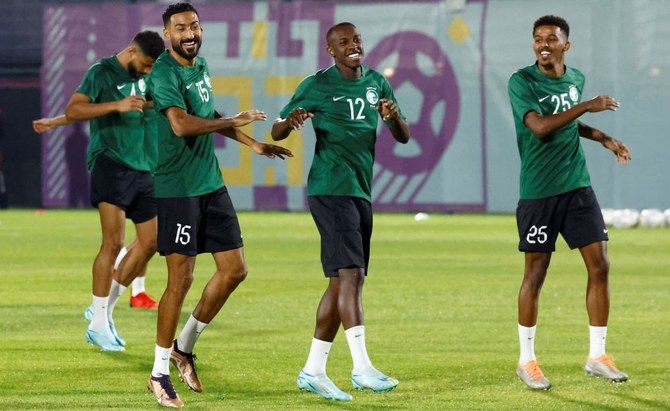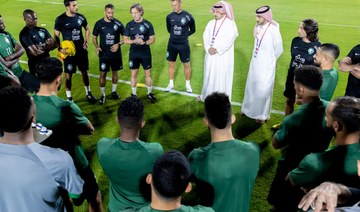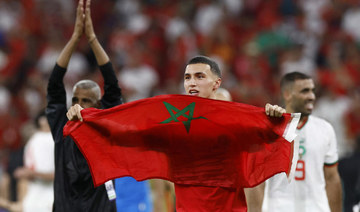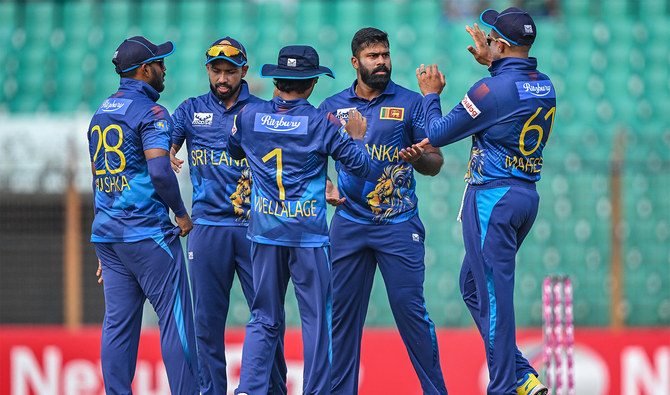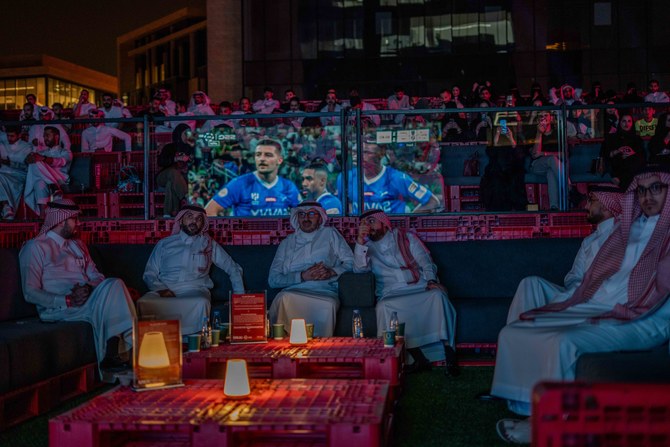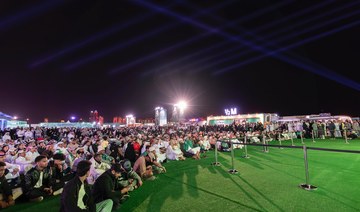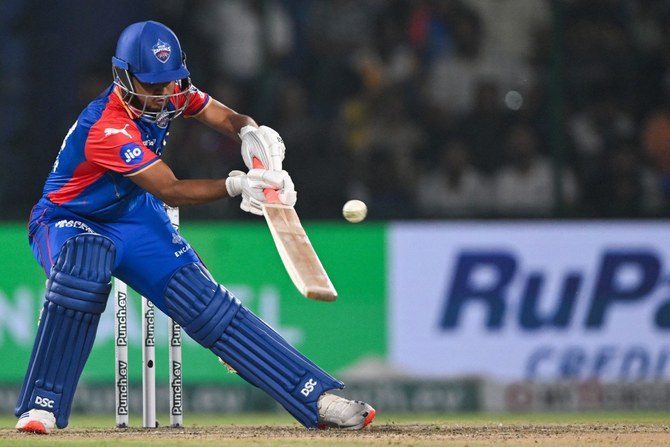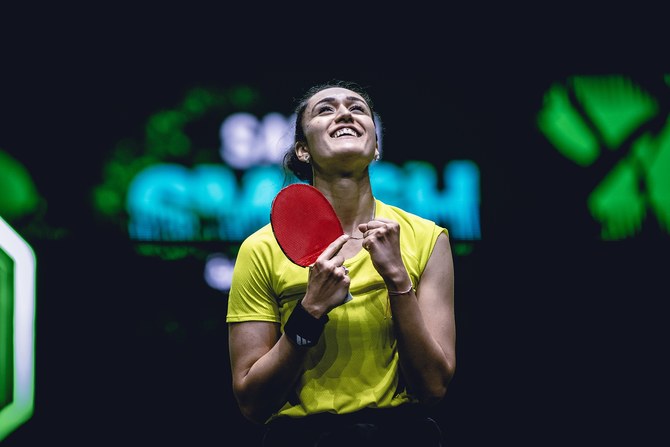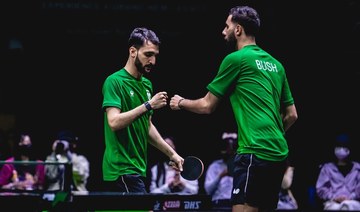It has been, as you would expect, an up and down World Cup so far for its Arab quartet. With Qatar, Saudi Arabia, Tunisia and Morocco all having played two games each, there has been glory, excitement, heartbreak, disappointment and more besides.
Importantly, there is still hope for all but one. At this stage in Russia 2018, all three of the region’s teams — those mentioned above minus the current hosts — all knew they were heading home regardless of the result in the final group match.
QATAR (0 pts)
That is the situation Qatar are now in. It has been a disastrous tournament on the pitch for the Asian champions who can, at least, take heart for the future given the improvements made by their regional rivals. That will be scant consolation for now, however, given the two defeats suffered at the hands of Ecuador and then Senegal.
The opening game was a huge disappointment for the Maroons, as they seemed to freeze in front of the South Americans and the watching world, and were a little fortunate to only lose 2-0. The subsequent performance against the African champions was clearly better but, once again, the hosts found themselves two goals down and gave themselves too much to do, and lost 3-1.
It meant the end of the decade-long dream but the World Cup is not yet over. It was hoped that the match against the Netherlands, a glamour game against a genuine football giant, would actually mean something. It does not in terms of Qatar’s progression from the group but there is still pride to play for as well as the prize of a first ever point or more.
The Dutch need a win to be sure of going through and will want to top the group to avoid a likely clash with England in the second round. That will give the game a competitive edge and will give Qatar a last chance to show the world what they are made of.
SAUDI ARABIA (3 pts)
Saudi Arabia have already done that with a legendary win against the mighty Argentina, still the biggest result of this World Cup. That was followed by a 2-0 defeat against Poland, a game that many felt the Green Falcons deserved more from. Had Salem Al-Dawsari scored a first-half penalty, or the team taken many of their chances, then Herve Renard’s men would be sitting pretty in Group C with four points. Still, had you offered the two-time Asian champions three points from the opening two games two weeks ago, they would certainly have taken it.
Regardless, they still control their own destiny. A win against Mexico means six points and a place in the last 16 for the first time since 1994. It could happen. With tens of thousands of supporters ready to stand behind them once more, anything is possible.
“I hope they won’t give up,” Renard said, “because when you are fans, you need to support your team when it’s a fantastic day, but you also need to support your team to make history during the third game.”
It is not history but mathematics that would determine the standings should there be a draw. It would mean that Saudi Arabia would have four points and finish above El Tri, who have yet to impress, yet to win and yet to even score — and have just one point.
Then it would all be about the other clash. Should Poland, top of the group with four points, defeat Argentina, who have three, then all will be well — but anything else and it comes down to goal difference. If the South Americans and Europeans draw, then the Arab team would lose out by the narrowest of margins, which means that a big win for either team would be beneficial. The dream scenario for Saudi Arabia is victory against Mexico and a draw elsewhere which would mean top spot and the (very likely) avoidance of France in the second round.
TUNISIA (1 pt)
Progress for Saudi in first place would also involve a potential knockout clash with Tunisia. It is a long shot, but stranger things have happened. The Carthage Eagles impressed in the opening Group D game with a 0-0 draw against Denmark but were frustrated by Australia and lost 1-0. Now they have to beat France to have a chance of a first appearance in the second round. It is a big ask but the defending champions are already through and virtually assured of top spot.
Victory alone is not enough but anything other than an Australia win against Denmark, who also have just one point, would give Tunisia a chance. A draw would mean that the victorious North Africans would finish second above the Socceroos as they already have a better goal difference.
A Scandinavian win would mean it would all depend on who won by a bigger margin. The minimum requirement, however, is a famous victory against France. Whatever happens, Jalel Kadri’s men can leave Qatar with much to be proud of. They have shown they can defend, work hard and fight. Now they have to score and win.
MOROCCO (4 pts)
Last, and very much not least, Morocco. Their already famous 2-0 win over Belgium on Sunday put them on four points from the first two games following an opening 0-0 draw with Croatia. It all means that a point against the already eliminated Canada will be enough for a first appearance in the second round since 1986. The North Americans may have lost both games so far but have been competitive. It would, however, be a major disappointment if Morocco slip up with the promised land so close.
Even a loss may not be a disaster. Should Croatia defeat the hitherto unimpressive Belgium, which would not be a surprise, then the Atlas Lions are through whatever happens. A draw in the all-European clash would pit Belgium’s goal difference against Morocco’s.
It is looking good for Morocco, possible for Saudi Arabia, unlikely for Tunisia and over for Qatar, but there are sure to be plenty of twists and turns to come.



